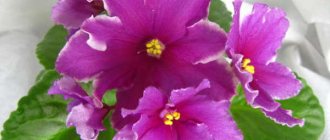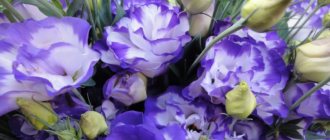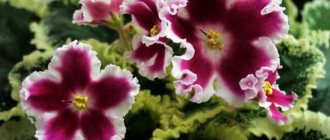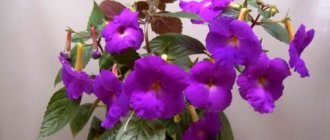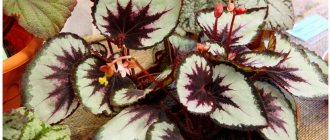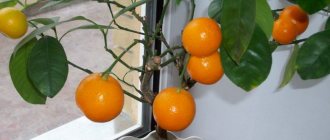Every housewife dreams of seeing her garden plot blooming and fragrant. For this, a lot of effort and time is spent, a combination of different plants is selected, and flower beds are erected. But it is impossible to imagine a single flower bed without a beautiful and delicate eustoma flower. In addition to growing in open ground, this plant looks great in a flower pot on the windowsill.
If the reader has never heard or seen this beautiful flower, then the editors of the Agronom.guru portal will help you understand the question of how to properly plant perennial eustoma and tell you about further care. The article will also present photos of buds and flowers that amaze with their beauty.
An ideal solution for decorating a personal plot
Features of caring for eustoma
The process of growing and caring for lisianthus is not easy, since the plant requires diffused bright lighting and fresh air. When growing at home, it is better to place the pot with the plant on an east or west window. It is important to maintain the temperature within 19-22 ºC with frequent ventilation. Regular watering with soft, settled water is also required, the main thing is to prevent the soil from drying out and becoming overly moist. It is prohibited to spray foliage as this will lead to diseases.
Watering and feeding eustoma
In summer, the flower needs regular watering, but with the arrival of winter, their amount is reduced. During this period, each subsequent watering is carried out when the top layer of soil dries to a depth of 2-3 centimeters. To carry out the procedures, soft rain or settled tap liquid is used. The crop needs high air humidity. To do this, you can place a container of water next to the plant or spray the liquid near the flower.
Note! If water gets on the leaves and stems of plants, it can cause sunburn of plants, so water should be poured only at the root.
Fertilizers are applied to lisianthus every two weeks. For this purpose, special store-bought compositions for flowers are used in the dosage prescribed by the instructions. In winter, nutrients are not added to the soil. During this period, the plant should be at rest.
Step-by-step instructions on how to grow eustoma from seeds
Growing lisianthus from seeds is a rather painstaking process that requires a lot of attention from the grower. To grow eustoma flowers from seeds yourself, you need to follow the following instructions.
- To perform this procedure, you will need a plastic tray and a metal grill with small windows. The size of the grid should ensure that the peat tablets are kept above the water.
- Initially, you need to pour water into the pan with the addition of a growth stimulator. You will also need to add other fertilizers, in particular nitrogen. It is recommended to add soil disinfectants to the water.
- Next, a grid with peat tablets is installed above the pan. They should barely touch the surface of the water. In this case, the tablets need to be spaced from each other at a distance of 5 centimeters. This will avoid fungal infection between seedlings.
- After the tablets swell from moisture, you need to place eustoma seeds in them. 3 seeds are planted in each peat tablet.
- The first shoots will appear 2 weeks after planting. At this time, you need to select the most developed and strong shoots. All sick and weak ones should be removed.
- It is important to place the tray with the trellis and plants in a warm room with moderate diffused lighting. The top of the tray is covered with glass or film to create optimal humidity conditions.
- It is necessary to ventilate the seedlings daily, without temperature changes or drafts. If the peat tablets dry out, it is recommended to carry out additional watering.
- After 5.6 leaves appear on the young plants, the cover can be removed from the tray.
- Next, transplant the eustoma along with the peat tablet into its own flowerpot. The transplantation process should be carried out in the evening.
eustoma seedlings
Description of the species
Eustoma grandiflora or lisianthus is a spectacular and attractive plant with a rich color palette - from delicate pastel shades to rich and bright tones. White, lemon, powdery, coral, blue or purple funnel-shaped flowers reach a size of 5-12 cm.
Some varieties are two-colored and edged. The height range of the bush is from 20 cm to a meter. The stem is strong, flexible and branches well from the middle.
Petals are double or smooth, becoming darker towards the center; the peduncles are long, grow in a bouquet type - in an inflorescence there are 15-30 large and fragrant flowers.
The leaves are elongated, oval, with raised veins of bluish or bluish-green color. All parts of the plant are covered with a protective layer of wax.
| Short description | |
| Category: | annual plant |
| Color options: | white, lemon, pink, coral, blue, light blue, purple, beige petals; single color or combined |
| Flowering time: | summer |
| Height: | 20-100 cm |
| Width: | 20-30 cm |
| Minimum temperature: | -7 °C to –12°C |
| Optimal light: | bright diffuse lighting |
| Plant companions: | Iberis, Coreopsis, Salvia |
| Frost resistance zones: | 8-12 |
In what situations is a transplant needed?
The process of planting and transplanting eustomas is extremely painful and cannot take root in a new pot for a long time. Moreover, at home, these flowers do not grow for long - about two years, so the transplantation process is not advisable. Still, a transplant is needed:
- When buying a young plant at a flower shop. Lisianthus must be replanted within three days after purchase.
- In the case when the root system has completely filled the space of the pot. This happens extremely rarely and is typical for adult plants.
- In case the seeds were planted not in peat tablets, but in a common container.
In any of the options, you need to remember that the transplant must take place together with the mother lump of earth from the previous place of growth.
Prevention of diseases of eustoma seedlings
Coconut substrate and plant fibers are prone to mold. Therefore, before using it, you need to treat it with potassium permanganate or a fungicide.
When germinating seeds, be sure to ventilate to avoid the appearance of mold:
- To prevent black leg and fusarium rot, Fundazol is used.
- Recently, many flower growers have fallen in love with epin and zircon. These drugs stimulate physiological processes in the plant body and increase stress resistance.
Picking seedlings
- When four normal leaves appear, the plant is ready for picking. Seedlings grown in a container or peat tablets need to be planted in separate pots; sometimes two or three plants are allowed in one container.
- This procedure will speed up the growth of the flower, make the plant stronger, and improve the development of the root system.
- Using a thin object, carefully lift the miniature plant and remove it from the peat soil.
- A small depression is made in the pot where the picking will be done. The sprout is transferred into this depression.
- The soil should be well moistened. Deepening is carried out along the lower leaves.
- Immediately after the procedure, put on a protective cap (plastic bag or plastic cup). The plants are kept in this state for several weeks.
- As a rule, plants tolerate picking well. In two weeks, your seedlings will already be twice as large.
Picking seedlings at the age of 2 months.
How to plant in open ground
Purchased or independently grown eustoma seedlings can be planted in open ground in a garden or flower garden. Since this is a fastidious plant, in order for it to take root, you need to take into account some factors.
First of all, it is important to decide on the landing site. This should be a draft-free area in partial shade. In this case, you need loose soil that can drain water well.
Before planting, the soil is dug up using a spade. At the same time, the soil is fertilized with complex mineral fertilizers (nitrophoska, azofoska or the like). If the soil is highly acidic, it will be necessary to add wood ash or dolomite flour.
After mixing the fertilizers with the soil, level the area and make shallow holes where the seedlings are placed. After planting, careful watering is carried out. It is important that water does not get on the foliage. In addition, the area is mulched with peat.
Care involves constantly maintaining the soil in a loose state with optimal moisture. Remember: if there is insufficient watering, the eustoma may drop its buds or dry out completely. It is important to promptly remove weeds from the garden bed. Tall varieties are tied up.
During the open ground season, the plant will need to be fertilized 2-3 times. You should not exceed the recommended amount; it is better to even reduce the concentration. In case of frequent rains, it is recommended to carry out the prevention of fungal diseases.
general information
Among experienced gardeners, eustoma is also known as lisianthus, Japanese rose or Texas bell. And all because botanists from the USA and Japan were involved in breeding and selection. Thanks to their efforts, eustoma can now be grown even at home, in a greenhouse or in the garden.
Domestic species are smaller and simpler in color, but garden ones stretch up to 90 cm and come in the rarest shades. The eustoma flower resembles a large (up to 8 cm in diameter) cross between a rose and a poppy. The buds bloom one by one and retain their beauty and freshness for a long time, even when cut in bouquets.
Photo: sv.hobbygaiety.com
The stems of eustoma are highly branched and dotted with large leaves, as if covered with wax. All tall varieties produce long stems, which are cut for decorative purposes. Sometimes up to 30-35 buds are formed on one peduncle.
Eustoma grows in the south of North America, but it quickly conquered all of Europe. In the Netherlands, where gardening has long been a real art, it is one of the top ten flowers for cutting and sale.
In everyday life, one-year-old eustoma is more often grown because it is not as capricious as two-year-old. In addition to tall ones, there are also short ones that decorate gazebos and balconies. Flowers can be single or double, depending on the variety.
Photo: liveinternet.ru
What to look for when choosing eustoma?
If you plan to plant a flower in open ground, then you should pay attention to tall varieties. They are more resistant to negative influences. Low-growing ones are the best option for a home or greenhouse. When purchasing seeds, it is important to clarify the height of the adult plant and the flowering period.
Not unimportant indicators when choosing are indicators of resistance to temperature fluctuations and light deficiency. Taking these parameters into account, you can choose the best option for any region of the country.

